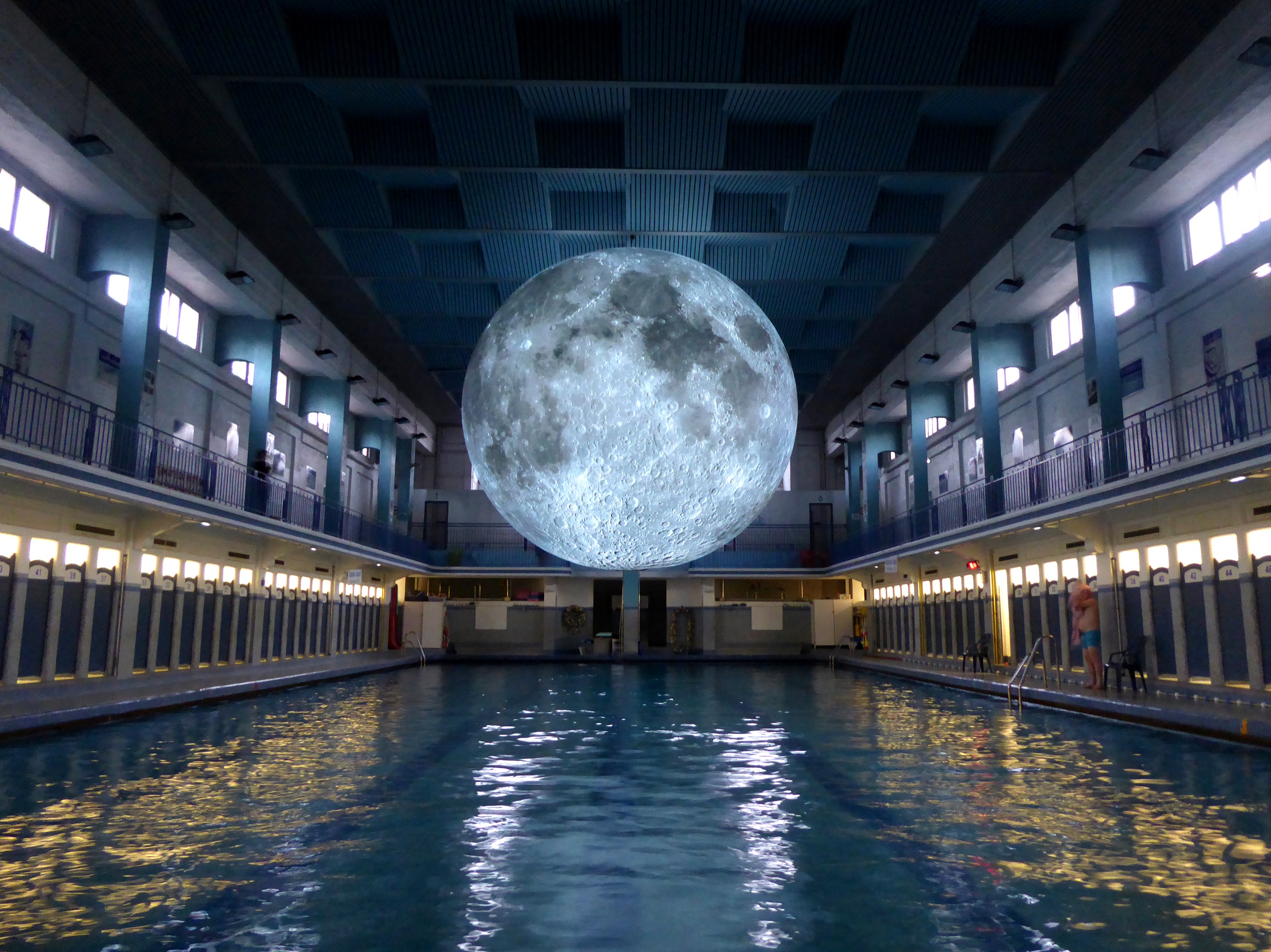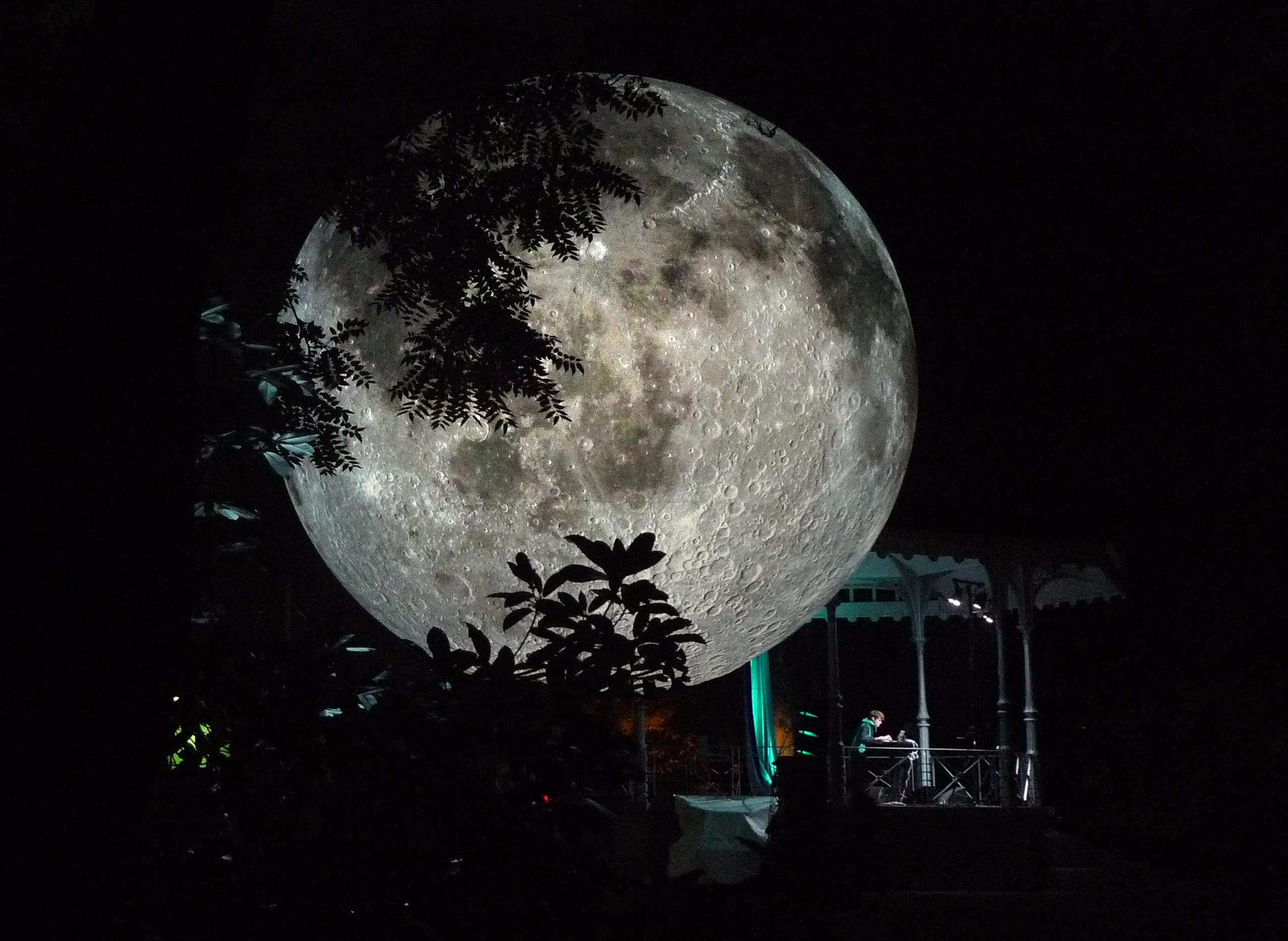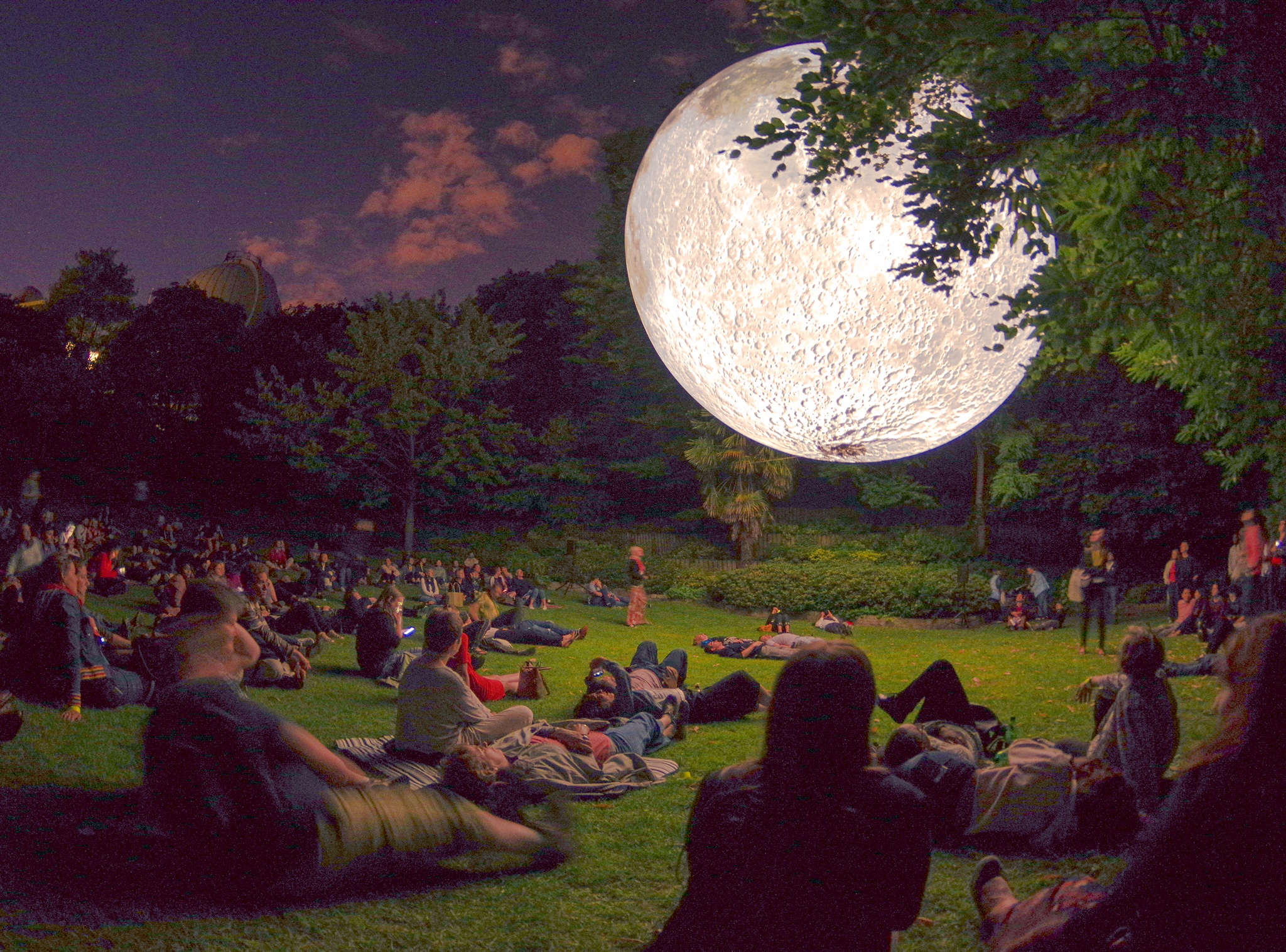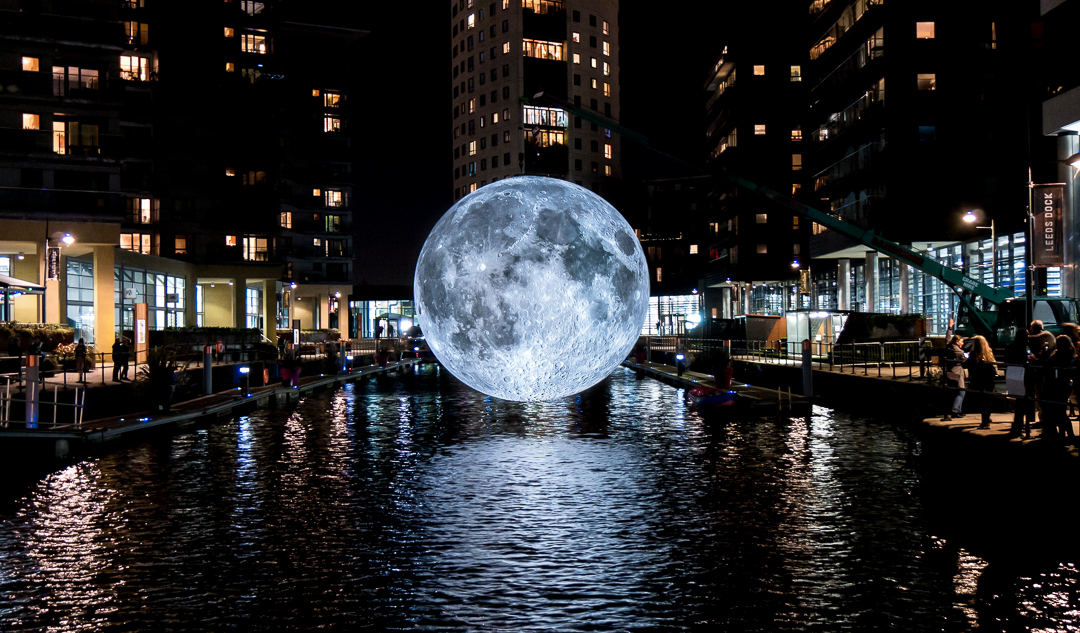
On their first encounter of Earth from space, astronauts report a strange life-altering awareness; a sudden realization of the vulnerability of Earth and its unimportance in the scheme of the cosmos. The emotional impact of this “overview effect” renders the manmade borders and the cultural differences which are the source of so much Earth-bound conflict suddenly trivial and obsolete.
The work of artist Luke Jerram creates this effect for those who will never don a spacesuit. His Gaia—a suspended sphere lit up from within and imprinted with NASA imagery of Earth’s surface—is a literal close-up on our current environmental situation of a planet which is more vulnerable than ever.

The human relationship with Earth is undeniably intimate, however, our relationship with the moon arguably stretches back a lot further, despite Earth’s advantage of proximity. Sometimes it’s easier to see what hovers above your head than what lies beneath your feet and even while authorities were still insisting on a flat Earth, the moon hung as an undeniably round (at least when full) companionable constant. As Antony Gormley reminds us, it has been fifty years since man first set foot on the moon, but we have been fascinated by it for far longer. Jerram shares this primary concern. Before Gaia, he created Tide—an artwork which mirrored the push and pull of the moon’s tidal cycles, and his breathtaking Museum of the Moon—a seven-metre recreation of the moon, down to the smallest crater is currently on tour around the world.
“Sometimes it’s easier to see what hovers above your head than what lies beneath your feet”
In It’s a Wonderful Life, George Bailey offers to lasso the moon down for his wife, and it’s easy to see how that—albeit humorous—assumption of attainability is made. For a cold, celestial body, somehow the moon seems personal, within reach. As the Man in the Moon testifies, we have a tendency to personify this lump of rock.

Currently exhibited at London’s Natural History Museum, Jerram’s Museum of the Moon makes you feel strangely emotional as you approach it. It feels uncannily real, considering it’s basically a glorified hot air balloon. Printed with imagery from the NASA Lunar Reconnaissance Orbiter Mission, an interior bulb gives the sphere its ghostly glow. Below its craters and poles rendered in intricately accurate detail, viewers “moon-bathe”, lying on their backs and staring up at the silvery orb.
“Suspended over a French swimming pool, we are reminded of its powerful effect over the Earth’s tides and currents”
Unlike Earth, which has, quite frankly, seen better days, the moon has resisted most human interference. True, we’ve planted a flag or two, brought back a few rocks, and yet the moon has remained mostly unaffected by the human contagion. As manmade light floods the streets of our cities, it blots out the stars, but the moon shines through, impervious to our efforts.
The moon is a versatile inspiration of metaphors, and in the variety of settings on its exhibition tour, Jerram’s moon conjures a multitude of connotations. Hung in Ely Cathedral it can be seen as a manifestation of the myriad of creation myths of our universe, but also a reminder that for many cultures, the moon was considered a goddess in itself. Suspended over a French swimming pool, we are reminded of its powerful effect over the Earth’s tides and currents. Even from hundreds of thousands of miles away, the moon makes tangible its power on Earth.





